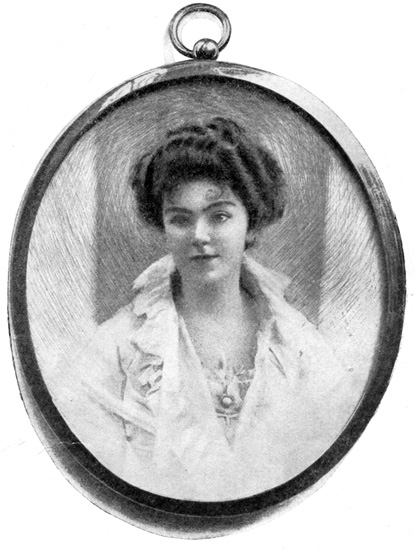Transcriber's Note:
Obvious typographical errors have been corrected.Inconsistent spelling and hyphenation in the originaldocument have been preserved.The book frequently omits punctuation before quotes. The punctuationhas been retained as in the original. The length and spacing ofellipses (...) has also been retained as printed.
There is no Chapter IV.


The
ORDEAL OF
ELIZABETH
NEW YORK
GROSSET & DUNLAP
PUBLISHERS
COPYRIGHT, 1901, BY
J. F. TAYLOR AND
COMPANY, NEW YORK
The ORDEAL
OF
ELIZABETH
Chapter I
The Van Vorst Homestead stands close tothe road-side; a dark, low-built, gloomy oldplace. The horse-shoe on the door, testifiesto its age, and the devout superstition of the VanVorst who built it. However effectual againstwitches, the horse-shoe cannot be said to havebrought much luck otherwise. The Van Vorstswho lived there, a junior branch of the old colonialhouse, did not prosper in worldly matters, but sankmore and more as time went on, in general respectand consideration.
There was a break in the deterioration, and apparentlya revival of old glories, when Peter VanVorst married his cousin, a brilliant beauty fromtown, who had refused, as tradition asserts, halfthe eligible men of her day, and accepted Peter forwhat seemed a sudden and mysterious caprice. Themarriage was a nine days' wonder; but whatever thereasons that prompted her strange choice—whether2love, indifference, or some feeling more complicatedand subtle; Elizabeth Van Vorst made noeffort to avert its consequences, but settled down insilence to a life of monotonous poverty. She didnot even try, as less favored women have done underharder circumstances, to keep in touch with theworld she had given up. She never wrote to herold friends, never recalled herself, by her presencein town, to her former admirers. As for the Homestead,it wore, under the inert indifference of herrule, the same neglected look which had prevailedfor years. The foliage grew in rank profusion aboutthe house till it shut out not only the sunlight, butall view of the river. Perhaps Madam Van Vorst,as people called her, disliked the idea of change; orperhaps she grudged the cost of a day's labor tocut the trees; or it might be that she liked the gloomand the feeling of confinement, and had no desire tofeast her eyes on the river, after the fashion of theNeighborhood. It reminded her too much, perhaps,of the outside world.
She was a stately, handsome old lady, and madean imposing appearance when she came into churchon Sunday, in the black silk gown which rustled withan old-time dignity, and her puffs of snow-whitehair standing out against the rim of her widow'sbonnet. Her daughters, following timidly behindher, seemed to belong to a different sphere; dull,